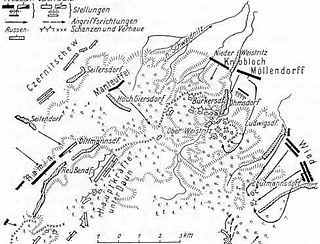 W
WThe Battle of Burkersdorf was a battle fought on 21 July 1762 during the Third Silesian War. A Prussian army of 40,000 men fought an Austrian army of around 30,000 men.
 W
WThe Battle of Chotusitz, or Chotusice, sometimes called the Battle of Czaslau, took place on 17 May 1742, in Bohemia, now the Czech Republic; it was part of the 1740 to 1742 First Silesian War, itself a subsidiary of the wider War of the Austrian Succession.
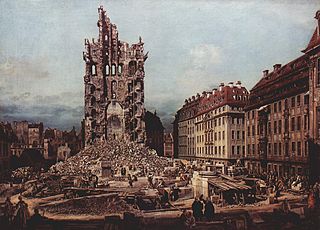 W
WThe Siege of Dresden took place in July 1760 during the Third Silesian War when a Prussian force led by Frederick the Great unsuccessfully besieged the city of Dresden in Saxony.
 W
WThe Battle of Hennersdorf, sometimes referred to as Catholic-Hennersdorf, was a minor encounter that took place on November 23, 1745 in Katholisch-Hennersdorf in Silesia during the Second Silesian War. The Prussians under Frederick II defeated the Austrians under Prince Charles Alexander of Lorraine. The Prussians surprised the Austrians and Saxons in their cantonments in Lusatia with the most success at Hennersdorf. There a force of two regiments of hussars and two regiments of cuirassiers under Zieten attacked a small force of two battalions of Saxon infantry and three regiments of Saxon cavalry. The Saxons, after making a desperate stand, were overwhelmed by the arrival of additional Prussian cavalry, infantry and artillery.
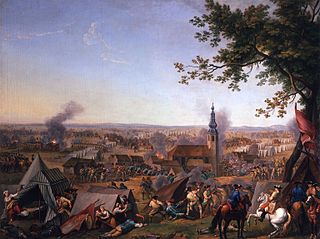 W
WThe Battle of Hochkirch took place on 14 October 1758, during the Third Silesian War. After several weeks of maneuvering for position, an Austrian army of 80,000 commanded by Lieutenant Field Marshal Leopold Josef Graf Daun surprised the Prussian army of 30,000–36,000 commanded by Frederick the Great. The Austrian army overwhelmed the Prussians and forced a general retreat. The battle took place in and around the village of Hochkirch, 9 kilometers (6 mi) east of Bautzen, Saxony.
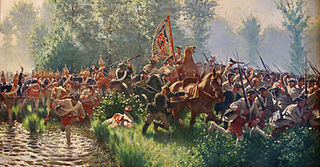 W
WThe Battle of Hohenfriedberg or Hohenfriedeberg, now Dobromierz, also known as the Battle of Striegau, now Strzegom, was one of Frederick the Great's most admired victories. Frederick's Prussian army decisively defeated an Austrian army under Prince Charles Alexander of Lorraine on 4 June 1745 during the Second Silesian War.
 W
WThe Battle of Kolín on 18 June 1757 saw 54,000 Austrians under Count von Daun defeat 34,000 Prussians under Frederick the Great during the Third Silesian War. The Prussians lost 14,000 men, while the Austrians lost 8,000 men.
 W
WThe Battle of Kunersdorf occurred on 12 August 1759 near Kunersdorf immediately east of Frankfurt an der Oder. Part of the Third Silesian War and the wider Seven Years' War, the battle involved over 100,000 men. An Allied army commanded by Pyotr Saltykov and Ernst Gideon von Laudon that included 41,000 Russians and 18,500 Austrians defeated Frederick the Great's army of 50,900 Prussians.
 W
WThe Battle of Leuthen was fought on 5 December 1757 and involved Frederick the Great's Prussian Army using maneuver warfare and terrain to rout a larger Austrian force completely, which was commanded by Prince Charles of Lorraine and Count Leopold Joseph von Daun. The victory ensured Prussian control of Silesia during the Third Silesian War, which was part of the Seven Years' War.
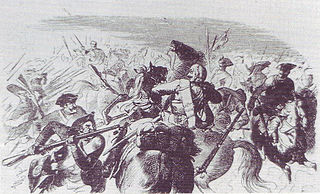 W
WThe Battle of Liegnitz on 15 August 1760 saw Frederick the Great's Prussian Army defeat the Austrian army under Ernst von Laudon during the Third Silesian War.
 W
WThe Battle of Lobositz or Lovosice also Lowositz on 1 October 1756 was the opening land battle of the Third Silesian War and the wider Seven Years' War. Frederick the Great's 28,000 Prussians were prevented by 33,000 Austrians under Maximilian Ulysses Count von Browne from continuing their invasion into the rich Bohemian plain, forcing Frederick to ultimately fall back north into Saxony for the winter.
 W
WThe Battle of Mollwitz was fought by Prussia and Austria on 10 April 1741, during the First Silesian War. It was the first battle of the new Prussian King Frederick II, in which both sides made numerous military blunders but the Prussian Army still managed to attain victory. This battle cemented Frederick's authority over the newly conquered territory of Silesia and gave him valuable military experience.
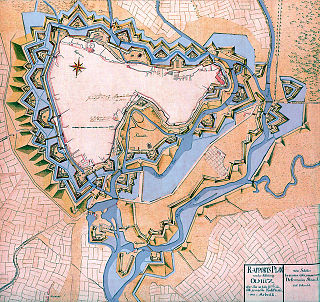 W
WThe siege of Olomouc took place in 1758 when a Prussian army led by Frederick the Great besieged the Austrian city of Olmütz during the Prussian invasion of Moravia in the Third Silesian War. The attempt stalled as the besiegers faced stronger resistance than Frederick had expected. With a lack of supplies and the approach of an Austrian relief force following the Battle of Domstadtl, Frederick abandoned the siege and withdrew from Moravia.
 W
WThe Siege of Pirna took place in 1756 as part of the Prussian invasion of Saxony during the Third Silesian War.
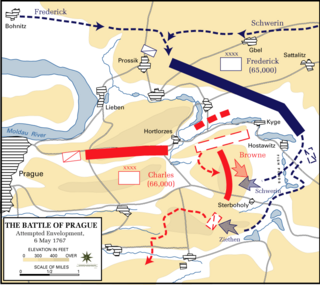 W
WIn the Battle of Prague or Battle of Štěrboholy, fought on 6 May 1757 during the Third Silesian War, Frederick the Great's 64,000 Prussians forced 61,000 Austrians to retreat, but having lost 14,300 men, decided he was not strong enough to attack Prague. The battle is mentioned in the famous German ballad Lenore written in 1773 by Gottfried August Bürger.
 W
WThe Battle of Rossbach took place on 5 November 1757 during the Third Silesian War near the village of Rossbach (Roßbach), in the Electorate of Saxony. It is sometimes called the Battle of, or at, Reichardtswerben, after a different nearby town. In this 90-minute battle, Frederick the Great, king of Prussia, defeated an Allied army composed of French forces augmented by a contingent of the Reichsarmee of the Holy Roman Empire. The French and Imperial army included almost 42,000 men, opposing a considerably smaller Prussian force of 22,000. Despite overwhelming odds, Frederick employed rapid movement, a flanking maneuver and oblique order to achieve complete surprise.
 W
WThe Battle of Soor was a battle between Frederick the Great's Prussian army and an Austro-Saxon army led by Prince Charles Alexander of Lorraine during the Second Silesian War. The battle occurred in the vicinity of Soor, also known as Hajnice, in the modern day Czech Republic. The battle started with a failed Austrian surprise attack on the outnumbered Prussians. Despite initial setbacks the Prussian army managed to defeat the Austrians, due to an unexpected attack from a reserve regiment that refused to follow Frederick's orders.
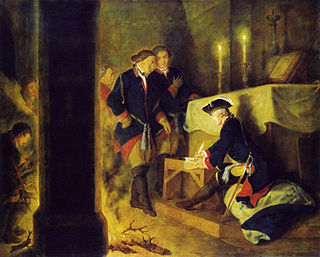 W
WIn the Battle of Torgau on 3 November 1760, King Frederick the Great's Prussian army fought a larger Austrian army under the command of Field Marshal Leopold Josef Graf Daun. The Prussians won a costly victory in one of the bloodiest battles of the Third Silesian War.
 W
WThe Battle of Zorndorf, fought on 25 August 1758, during the Seven Years' War, was fought between Russian troops commanded by Count William Fermor and a Prussian army commanded by King Frederick the Great. The battle was tactically inconclusive, with both armies holding their ground and claiming victory. The site of the battle was the Prussian village of Zorndorf.